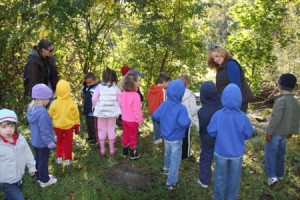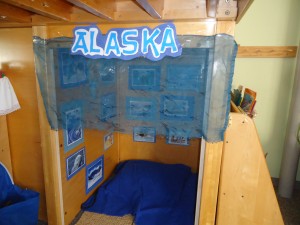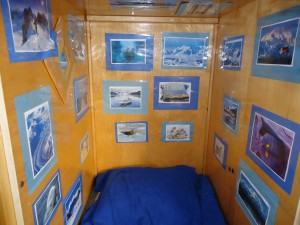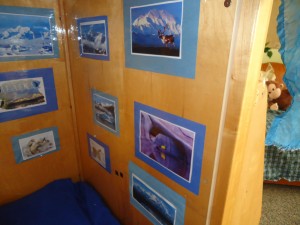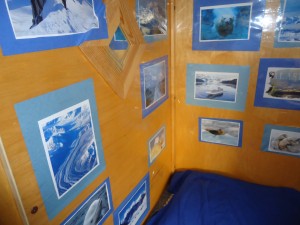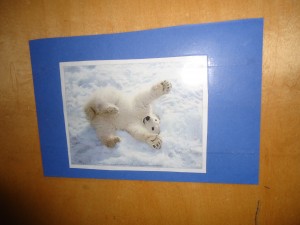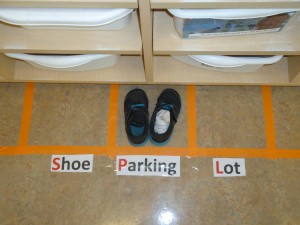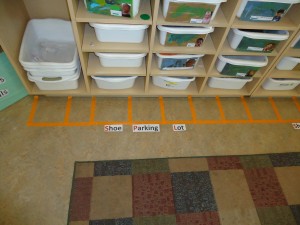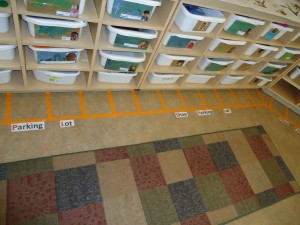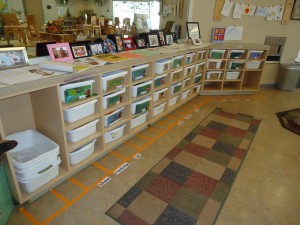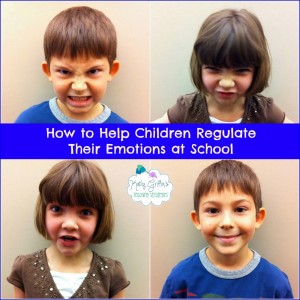
What is self-regulation?
Self-regulation requires a child to develop the ability to manage his emotions and control bodily functions as well as maintain focus and attention .Children develop at different rates in all of the developmental domains and this is true for self-regulation also. Since self-regulation is a complex process that allows children to control their attention, thoughts, emotions and behaviors, it warrants intentional planning on the part of the teachers.
Children develop and learn different strategies based on different emotions. For example, a toddler may crawl into the lap of a caregiver seeking comfort when a toy she was playing with was taken away by a peer, or a 3 year old may carry a stuffed rabbit around for 15 minutes after his mother leaves him at child care in the morning. Individual differences, including temperament, and the ability to control reactions are important in understanding self-regulation.
Why is the ability to self-regulate important?
Ellen Galinsky (2010), author of the book Mind in the Making, found self-regulation essential for success in school, work, and life. The critical window for self-regulation takes place from birth to age five when children develop the foundational skills for self-regulation. During this time, adults are helping children to build the necessary skills that are critical to regulate thinking and behavior.
As children enter kindergarten, good self-regulation includes focused attention, the ability to stay on task, ignore distractions, inhibit impulsivity, plan one’s actions, reflect on one’s thinking and cooperate and demonstrate empathy to peers. Other skills include turn taking, following directions the first time given and communicating thoughts and needs verbally (Bodrova & Leong, 2008).
How do children learn to self-regulate?
Modeling
Modeling is where the role of the preschool teacher is very important as she is continuously modeling self-regulation skills for young children throughout the day in her classroom. Children need opportunities to learn and practice these new skills during the day with peers and adults.
Teachers can model appropriate responses by participating in conversations with children and facilitating peer-to-peer support when conflict arises. When teachers provide structure and predictability throughout the daily schedule, it helps children self-regulate because they learn and understand what to expect. Teachers also model for young children as they remind them, “You can have a turn when he is finished.” By recognizing when children use effective self-regulation strategies on their own, preschool teachers reinforce each child’s developing self-regulation skills. Consequently, children recognize successful strategies and the situations in which they took place (Kolestelink et al., 2009).
Realistic expectations
By having appropriate and realistic expectations for young children’s behavior, teachers help children develop self-regulation gradually over time. Defining age-appropriate limits helps a child know what is expected of him. Teachers need to examine their current strategies to determine if their practices reflect realistic expectations regarding young children’s self-regulation skills. For example, can children be allowed to maintain a position on the floor during circle time that is comfortable to them instead of asking them to cross their legs a certain way? Teachers might discover that shortening the length of time a child spends in whole group activities such as circle time is more appropriate for that child. Allowing children to be active participants during circle time instead of passive observers is a realistic expectation for young children that teachers may permit. Teachers must also be mindful of adaptations that may help individual children be more successful at self-regulating (e.g., holding a fidget toy or looking at a personal copy of the book during circle time).
Scaffolding
Scaffolding for young children assists them to develop self-regulation. Teachers must acknowledge where the child is performing and provide the necessary level of support to allow the child to be successful (Florez, 2011). By using how and why questions, teachers are also able to facilitate children’s critical thinking skills and provide opportunities for the development of self-regulation. Classroom teachers can provide hints and prompts to assist children in self-regulation. This support may take the form of answering a question, assisting them in completing an activity, or providing words for a child’s action. A teacher may model self-talk to demonstrate the use of “talking things out” to help make a decision. Suggesting a child observe a peer when she has managed her strong emotions in a positive way is another example of modeling. For example, a teacher might say, “Did you see how Jane waited her turn to show us her bunny even though she was so excited and wanted to go first? Waiting is hard work sometimes!” Helping a child learn additional techniques such as deep breathing when he is angry during a situation can also assist him with learning how to self-regulate.
The Classroom Environment
The classroom environment can provide many opportunities for children to practice self-regulation. A classic example is when a child’s first choice for a learning center is full. He must decide to go somewhere else or negotiate with another child to have a turn at the center. In the scenario at the beginning of this article, the teacher may have seen different results if she had used one or more of the following teaching strategies:
Display a visual reminder to let each child know how many children are allowed in the center. Create a check-in system to denote when the center is full.
Display a visual timer to help children know how much longer they have to wait.
Facilitate a child’s engagement in another center by asking him about his other interests.
By using one or more of these strategies, the chances of a child’s becoming upset can be reduced and his repertoire of strategies for self-regulation can be increased.
When dramatic play materials are provided, children can negotiate roles in their play, plan and cooperate with peers, and have opportunities for social interactions with multiple peers (Epstein, 2009). Teachers may also use visual supports in the classroom to remind children what self-regulation skills are needed at times throughout the daily schedule (e.g., pictures of turn taking, gentle hands, using inside voices). Visual supports such as a picture schedule/calendar serve an additional purpose of assisting children in knowing what their day will look like.
When do teachers withdraw support?
It is critical for teachers to understand how and when to fade the support individual children need. Teachers withdraw their level of support as children no longer need prompting to self-regulate. At this point, children are able to internalize and self-regulation takes place without the support of a teacher or a more competent peer.
What type of self-regulation is most challenging for children?
Learning to self-regulate is different for each child. For example, the child with sensory processing difficulties or a short attention span may experience more challenges with self-regulation. Children with limited language skills may have difficulty communicating and will need help with emotional self-regulation if they become easily frustrated when they are not understood by their peers. The teacher’s role is to assist children with strengthening their self-regulation skills.
Conclusion
Understanding that each child may need a different level of support with their physical, emotional and behavioral regulation is critical for teachers to assist with developing a child’s skills. By intentional planning, reflecting, and attending to the classroom environment, teachers can develop and implement the necessary strategies to assist children with developing their self-regulation skills.
References
Blair, C. (2009). Self-regulation and school readiness. The International Child and Youth Care Network. Retrieved from http://www.cyc-net.org/cyc-online/cyconline-oct2009-blair.html
Bodrova, E. & Leong, D. (2007). Tools of the mind: The Vygotskian approach to early childhood education.(2nd ed..) Upper Saddle River, NJ: Pearson Education, Inc.
Bodrova, E., & Leong, D. (2008). Developing self-regulation in kindergarten; can we keep all the crickets in the basket? Retrieved from www.naeyc.org/files/yc/file/200803/BTJ_Primary_Interest.pdf
Epstein, A. (2009). Me, you, us: Social-emotional learning in preschool. Ypsilanti, MI: HighScope.
Florez, I. (2011). Developing young children’s self-regulation through everyday experiences. Young Children, 66 (4),46-51.
Galinsky, E. (2010). Mind in the making. New York, NY: HarperCollins .
Gillespie, L. G., & Seibel, N. (2006). Self-regulation: A cornerstone of early childhood development. Beyond the journal: Young Children on the web. http://journal.naeyc.org/btj/200607/Gillespie709BTJ.pdf
Kolstelnik, M., Whirren, A., Soderman. A., & Gregory, K. (2009). Guiding children’s social development and learning (6th ed.). Clifton Park, NY: Delmar.
Riley, D., San Juan, R., Klinker, J., & Ramminger, A. (2008). Social and emotional development: Connecting science and practice in early childhood settings. St. Paul, MN: Redleaf Press.

